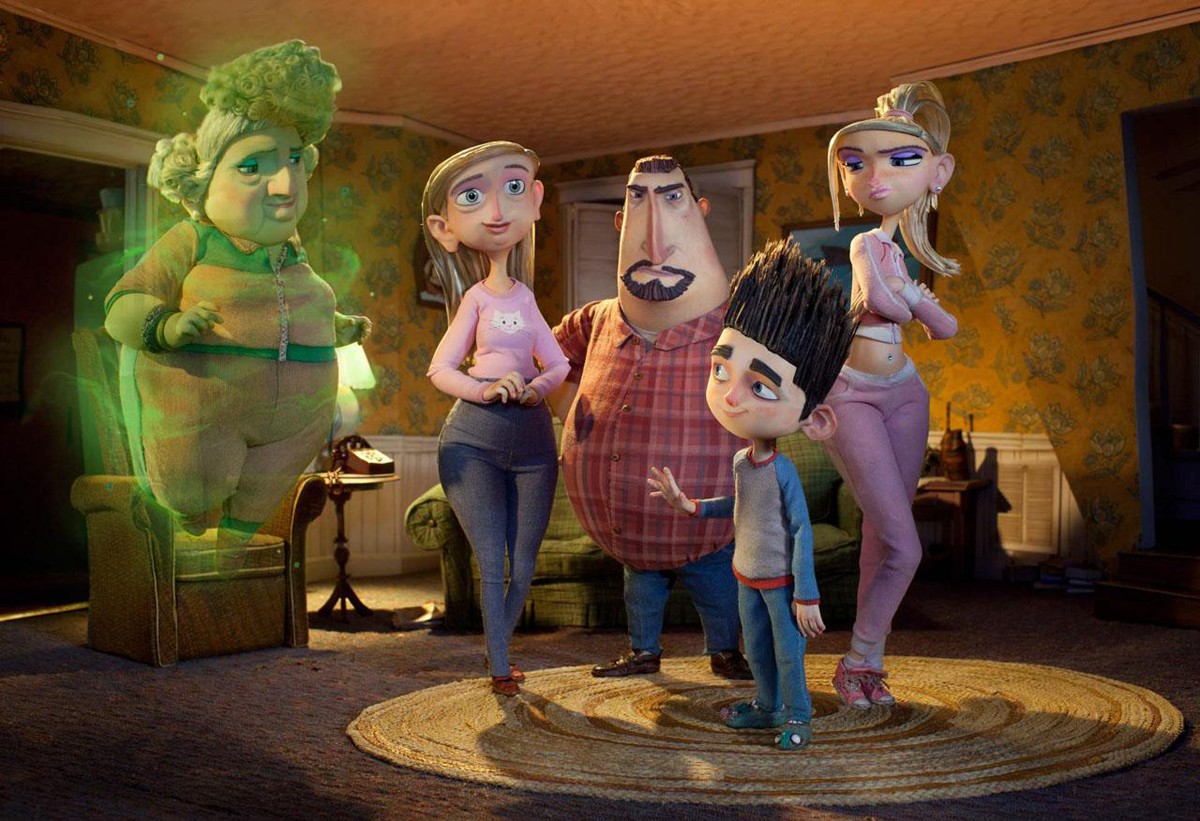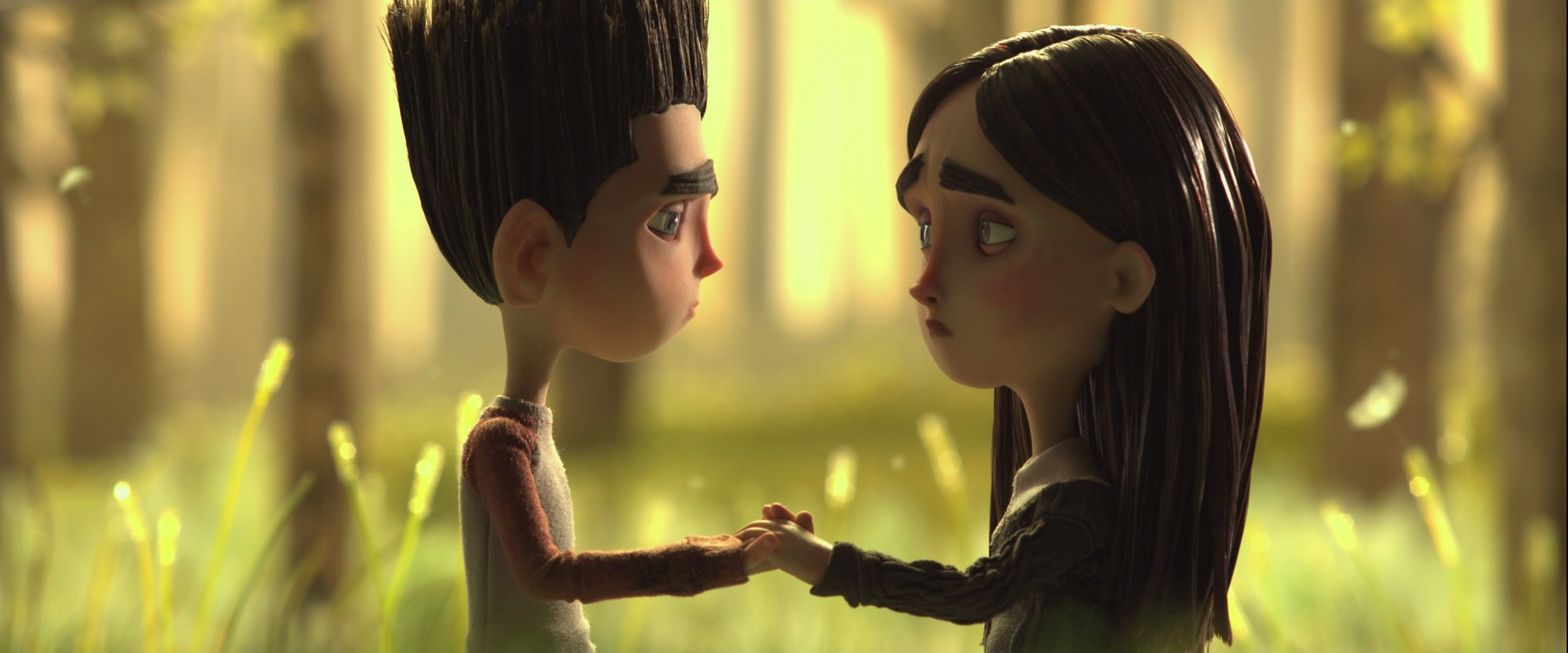What is scarier? A horde of zombies seemingly destroying your town and wanting to eat you or being the victim of bullying in which your classmates and townsfolks are the abusers? Laika's Paranorman, the 2012 stop motion horror comedy film, argues that there really isn't much of a difference.
 |
| Image via fmvmagazine |
For the month of October, best known for Halloween, I decided to talk about a film that fits with the themes of Halloween and that of National Bullying Prevention Month. According to the website stopbullying.org, 49 percent of students from 4th to 12th grade reported being bullied by other students at school at least once a month. Almost 31 percent of those students admitted to bullying others. The website also explains that bullying can lead to or worsen feelings of isolation, rejection, exclusion and despair. What does all of this have to do with Paranorman? All those feelings are explored in the movie.
This stop motion adventure follows Norman, an elementary school kid in a fictional Massachusetts town who can talk to the dead. Practically no one in his town accepts Norman as he’s constantly the punching bag for the older kids in his school or ignored by classmates. At the beginning of the film, Norman already has a reputation as “that weird kid” and gets stares from adults whenever he does something as simple as walking to school and conversing with the ghosts he keeps bumping into. Norman can only take solace in the companionship of Neil, a classmate who is bullied for his weight, and his dead grandmother- a relationship his dad disapproves of because of how “bizarre” it is.
Despite Norman’s struggles at the beginning of the film, this isn’t a simplistic story involving him trying to prove to others that his powers are real or something like that. Instead, Norman is practically OK with his powers and seems to accept his bullying from others as a consequence of his weirdness. While most films would play this is a form of empowerment for the main character, Paranorman subverts that idea by having him suffer for it. Not only is Norman being alienated because of his gift, he’s not fighting back against his tormentors, which motivates them to continue bullying him.
There’s a scene near the beginning of the film when Norman arrives to his locker at the start of a school day and sees the word “freak” scrawled on it. How does Norman react? He opens his locker and whips out a bottle of detergent to wipe the graffiti from it as if he’s been doing it for so long that’s practically a routine. There’s no fight in Norman as he accepts this broken situation as one he can do nothing to improve.
 |
| Image via fxguide.comfxguide.com |
That all changes with the arrival of the vengeful spirit of a witch executed by the town elders three centuries prior to the start of the film. She then proceeds to wreaks havoc on Norman’s small town by resurrecting the dead. Norman along with Neil, their older siblings and one of his bullies, must then work together to break this curse.
*SPOILER ALERT*
Ultimately, through a series of visions Norman has been receiving throughout the film, Norman makes the shocking discovery about the witch. She was actually an 11-year-old girl named Agatha who, like Norman, could speak to the dead. This caused the townspeople to fear her and ultimately execute her without any remorse. Did I mention that this is in an animated children’s movie?
As Neil tells Norman at the beginning of the film, “You can't stop bullying. It's human nature. If you were bigger and stupider, you'd probably be a bully too.” Agatha is presented as proof of that statement when, once she becomes an all-powerful specter, she decides to seek revenge for all the torment she’s faced to ensure that everyone knows the same pain she felt when she was alive.
 |
| Via Rebloggy |
This form of reverse bullying is one that’s rarely seen in pop culture, especially children’s movies. Paranorman dares to suggest that there’s a bully and a victim in all of us by showing us that those who are picked on when they're powerless go on to victimize the people beneath them once they become powerful. These victims hold genuine hatred and a desire for revenge in their hearts. Norman admits to Agatha at the end of the film that he wishes he could make his tormentors suffer but chooses pacifism because he knows that revenge wouldn't break the cycle of victimization.
The zombie townspeople explain to Norman that their main motivation for killing Agatha was because they were scared of her and thought what they were doing was right. Bullying, the movie argues, comes not from a place of strength but from sadness and fear.
Norman is able to break this cycle of violence by responding to Agatha’s hostility with kindness and empathy. He understands what she’s going through and saves the day by convincing her that not everyone out there will respond to her weirdness with fear. He then tells her what his grandmother told him at the beginning of the movie: it’s OK to be scared, just as long as we don’t let it change who we are.
 |
| Image via Paranorman.wikia.com |
Paranorman isn’t without its flaws. The middle section of it is filled with awkward attempts at physical comedy as the townspeople discover the zombies and attempt to destroy them. It’s cluttered and ultimately makes the film briefly lose focus of its themes despite the gorgeous, handcrafted stop-motion animation that helps make the film feel more special than it already is. Despite this, Paranorman has a message that children in particular should hear over and over again, but rarely learn from popular culture: bullying comes in many different forms, from playground teasing to parental neglect and the best counter to persecution is tolerance. This will cause everyone to hopefully be more enlightened about what bullying can do to others. As that saying goes, it gets better.